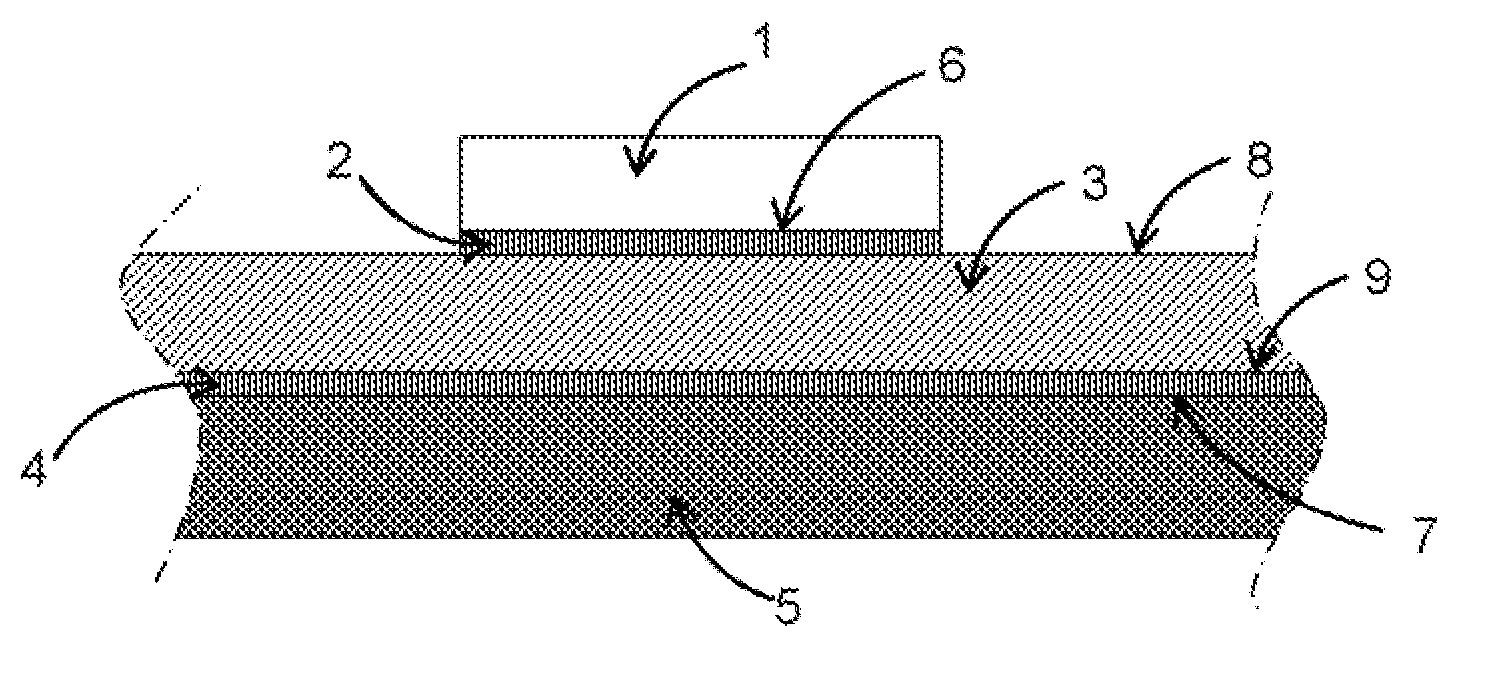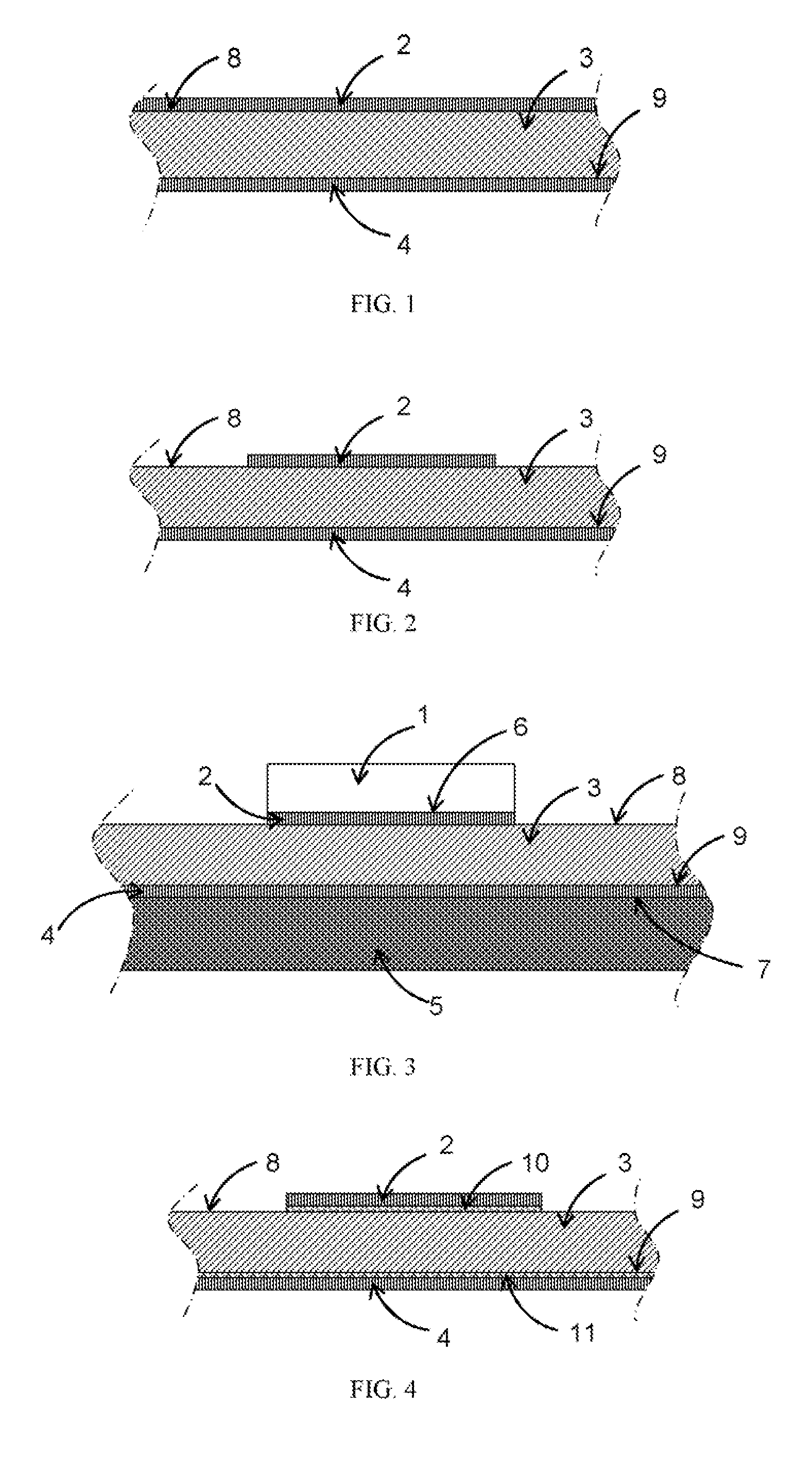Heat Dissipation Structure With Aligned Carbon Nanotube Arrays and Methods for Manufacturing And Use
a carbon nanotube and array technology, applied in chemical/physical/physical-chemical processes, chemical apparatus and processes, energy-based chemical/physical/physical-chemical processes, etc., can solve the problem of significantly limiting the advantage of heat conduction by carbon nanotubes, thermal interface materials with randomly directed carbon nanotubes dispersed in epoxy resins or other matrix materials, and inability to meet the increasing requirement of heat dissipation from a small area. , to achieve the effect of reducing th
- Summary
- Abstract
- Description
- Claims
- Application Information
AI Technical Summary
Benefits of technology
Problems solved by technology
Method used
Image
Examples
Embodiment Construction
[0030] The present application discloses embodiments of a heat dissipation structure with aligned carbon nanotube (CNT) arrays on both sides that serve as thermal interface material or heat dissipation fins for enlarging the thermal convection area and methods for manufacturing it. Details are set forth to provide a thorough understanding of the embodiments of the present inventions with the help of the drawings but not limited to. The features, structures, materials, and characteristics of the inventions can be combined in any suitable manner in one or more embodiments.
[0031] In one embodiment, to simplify the fabrication process and decrease the cost, the aligned CNT arrays are grown on both sides of heat dissipation structure surfaces at one time. No catalyst is predeposited on heat dissipation structure surfaces or pretreated for growing. Sublimed catalyst, such as Ferrocence, is used as raw material. In addition, carbon nanotubes are synthesized on heat dissipation structure s...
PUM
| Property | Measurement | Unit |
|---|---|---|
| diameter | aaaaa | aaaaa |
| temperature | aaaaa | aaaaa |
| temperature | aaaaa | aaaaa |
Abstract
Description
Claims
Application Information
 Login to View More
Login to View More - R&D
- Intellectual Property
- Life Sciences
- Materials
- Tech Scout
- Unparalleled Data Quality
- Higher Quality Content
- 60% Fewer Hallucinations
Browse by: Latest US Patents, China's latest patents, Technical Efficacy Thesaurus, Application Domain, Technology Topic, Popular Technical Reports.
© 2025 PatSnap. All rights reserved.Legal|Privacy policy|Modern Slavery Act Transparency Statement|Sitemap|About US| Contact US: help@patsnap.com



